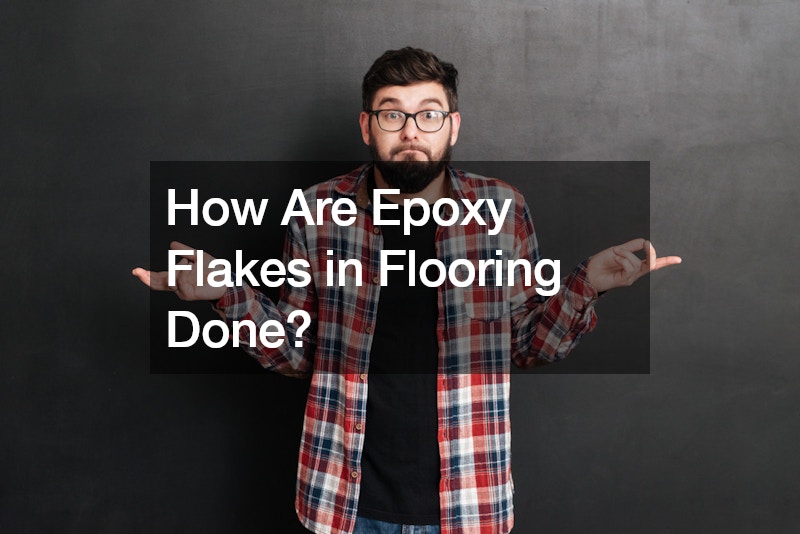
Epoxy flake flooring is a robust and aesthetically pleasing option that combines durability with an impressive range of designs and colors. This type of flooring utilizes colored flakes distributed over an epoxy base coat and sealed with a clear coat, creating a seamless and resistant surface ideal for garages, commercial spaces, and basements. The installation process is detailed and requires precise execution to ensure both longevity and visual appeal. Here’s a step-by-step guide on how epoxy flakes in flooring are done:
1. Surface Preparation
The first and most crucial step in the installation of epoxy flake flooring is surface preparation. The concrete floor must be clean, dry, and free of any contaminants such as oils, grease, and previous coatings.
Professionals typically use mechanical grinding or shot blasting to achieve a rough texture on the concrete surface. This texture is essential as it allows the epoxy to bond securely to the surface.
2. Base Coat Application
Once the floor is prepared, a base coat of epoxy resin is applied. This epoxy is usually mixed with a hardener just before application to begin the curing process. The base coat needs to be spread evenly across the floor using rollers or squeegees. The choice of epoxy color will affect the final appearance, as it will be visible through the flakes and the topcoat.
3. Broadcasting the Flakes
While the base coat is still wet, colored flakes are broadcast over the epoxy. This can be done by hand or with a hopper gun, depending on the size of the area and the desired density of flakes. The flakes can be spread to partial, full, or rejection coverage. Full flake broadcast, where the floor is completely covered and the base is no longer visible, is particularly popular for its vibrant look and increased thickness and durability.
4. Curing and Re-coating
After the flakes have been applied, the floor needs to cure. This curing time can vary depending on the epoxy formulation and environmental conditions, typically taking at least 12 to 24 hours. Once cured, any loose flakes are swept off or vacuumed, and the floor is scraped gently to remove any standing flakes and ensure a smooth surface.
5. Sealing with Top Coat
The final step is applying a clear epoxy or polyurethane top coat to seal the flakes and provide additional durability and chemical resistance. The top coat makes the floor easier to clean and maintain, and enhances the floor’s aesthetic by adding a glossy or matte finish depending on the preference.
6. Curing the Final Coat
The top coat also requires a curing period, which can range from 24 to 72 hours for light traffic, and up to a week for full cure, depending on the product used. It is crucial to follow the manufacturer’s recommendations to ensure the best performance of the flooring.
Watch the video above to learn more about epoxy flakes 50 lb installation!.






